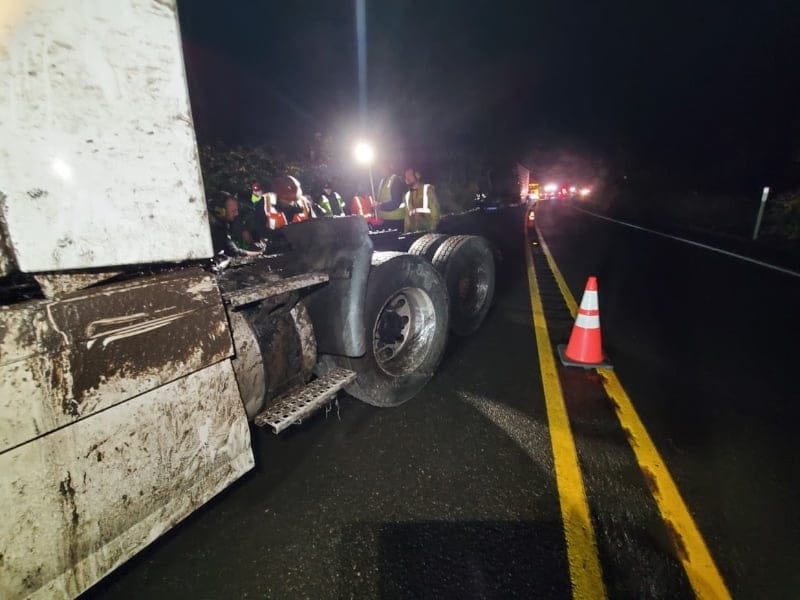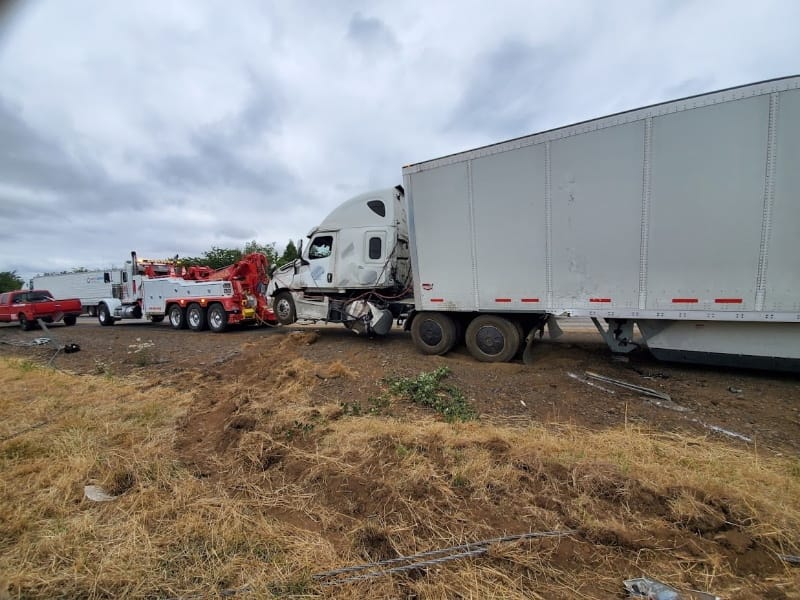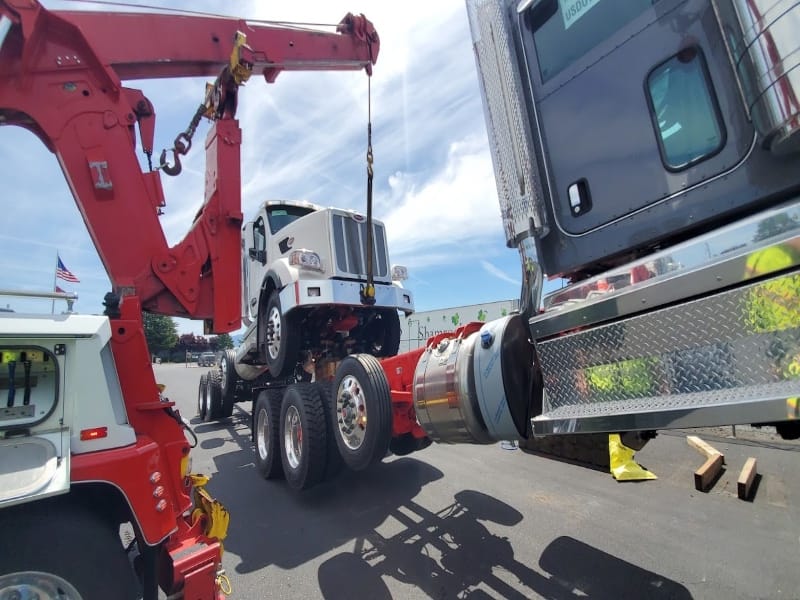Brake, Steer, Control
Our towing team has all seen it — a semi turned against its own trailer, blocking lanes on I-5, backed up traffic for miles, and a shaken driver waiting by the shoulder. Jackknifing isn’t rare, and on long hauls, especially in the rainy, hilly stretches of the interstate, we know how quickly it can happen. That’s why we want to talk about how it unfolds, and more importantly, how to stop it before it starts. Our work in I-5 semi recovery has taught us a lot about what causes these wrecks and what habits keep drivers upright and moving.

What Causes a Jackknife?
At its core, jackknifing is a loss of control — the trailer swings out, forming an angle with the cab, and in severe cases, the rig folds into itself. Once it starts, it’s incredibly difficult to correct. But it’s not some mystery. Here are the most common triggers we see during I-5 semi recovery calls:
Sudden Braking
When a trucker slams on the brakes, especially on slick roads or during a curve, the trailer can keep moving while the cab slows too fast. That mismatch in movement is what pulls the rig sideways.
Poor Traction
Rain, snow, ice, even oil-slicked pavement — anything that affects tire grip can turn a routine slowdown into a jackknife. We’ve pulled more trucks from wet ditches than we care to count.
Light Loads or Empty Trailers
It’s counterintuitive, but a fully loaded trailer has better road grip than an empty one. Light trailers are more likely to slide because they don’t have the weight to keep them stable.
Speed
Even a small bend in the road can become dangerous if you’re going too fast for conditions. Jackknifing is much more likely when drivers don’t adjust their speed for weather or traffic.
Habits That Keep You Safe
After helping with countless I-5 semi recovery situations, we’ve picked up patterns. Certain habits make all the difference. Here are the ones we trust:
- Slow Down Before the Curve: Don’t wait until you’re in it to brake. Downshift or ease off early and coast in with control.
- Avoid Sudden Movements: Steering, braking, and accelerating should be smooth. Jerky inputs unsettle the trailer.
- Mind Your Load: Know what’s in your trailer and how it shifts. An uneven or light load requires more caution.
- Keep Following Distance: The space ahead is your best friend. More distance means more reaction time.
- Check Your Brakes Regularly: Uneven brake wear can pull the trailer in unpredictable ways.
- Adjust for Weather: If it’s wet, slow down. If it’s icy, get off the road. No freight is worth losing control over.
How to Handle It If It Starts
If you feel your trailer sliding, resist the urge to panic. Here’s what we tell drivers during debriefs after an I-5 semi recovery:
- Don’t Slam the Brakes: Easing off is better than locking up.
- Try to Straighten: Steer into the skid gently if you can.
- Downshift: If your RPMs allow, a downshift can slow you more predictably than the brake pedal.
Jackknifing usually gives a split-second warning. Learning to recognize that moment — the feeling of the trailer getting “light” or pulling — is key to reacting in time.

Call Puddle Jumper—Your I-5 Semi Recovery Experts
At Puddle Jumper, our I-5 semi recovery experts know life on the road brings enough challenges without adding jackknifing to the list. That’s why we keep sharing what we’ve learned from every I-5 semi recovery we’ve done. Prevention doesn’t mean perfection — it means staying alert, being honest about the conditions, and driving with a plan.
If you ever do find yourself sideways, know this: we’ve got your back. But we’d rather meet you at a truck stop than at the scene of a wreck.

